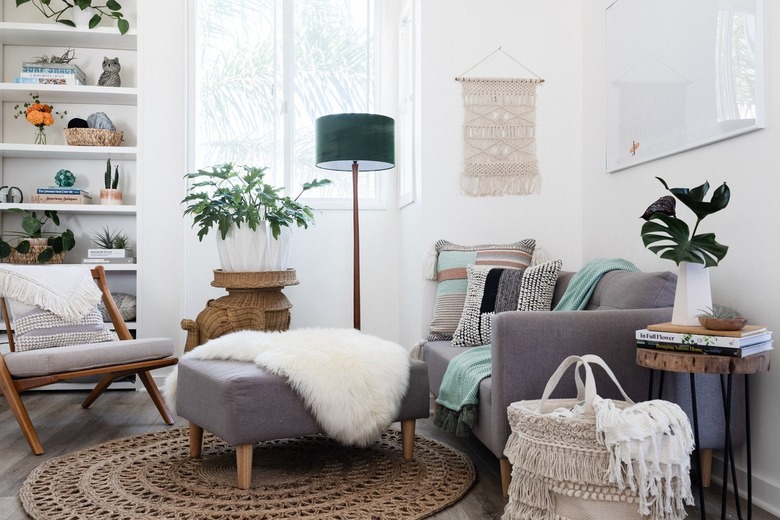How To Keep Furniture From Smudging Walls
We may receive a commission on purchases made from links.
Placing furniture close to a wall is one way to maximize floor space, but the downside is that those furnishings could smudge or otherwise mark the walls. To prevent furniture smudges, smears, and scuffs on the wall finish, either move the furniture farther away, put some anti-slip materials under the furniture legs, or install a chair railing on the affected wall.
Move Furniture Farther Away From Walls
Move Furniture Farther Away From Walls
Any furniture that's prone to moving when you use it, such as a recliner, a sofa, or even dining chairs, could leave marks on a wall it frequently touches. Recliners and rockers in particular might bump into a wall when someone uses the recline function. Reposition the recliner so that even in a fully opened position, it can't touch the wall. If it's a rocking recliner, make sure that rocking it doesn't allow the back of the headrest to touch the wall either. Position it so there's at least a few inches of clearance behind it even when it's fully extended.
In a dining area that's tight on space, it's not uncommon for chairs to bang against the wall as guests sit at or leave the table. If space allows, rearrange the table or seating so there's less likelihood of anything bumping the walls. Downsize the table if necessary or swap out the chairs for something with softer backs that won't smudge the walls. A chair rail around the perimeter of the room helps protect the walls when there's no alternative but to let the furniture bump into it occasionally. The chair rail also adds a decorative accent if you paint or stain it a different color than the existing wall finish.
Keep Furniture From Slipping
Keep Furniture From Slipping
For furniture that shouldn't move when you use it, such as a sofa, a little anti-slip protection helps keep it from bumping into or sliding against the wall. Add an area rug for a simple and decorative way to keep the sofa from sliding. Position the rug so that at the very least, the front legs of the sofa sit on the area rug. Use an anti-slip pad underneath the area rug to keep the rug itself from moving.
Stick-on pads or rubber feet for the bottoms of furniture legs also keep armchairs and sofas from sliding. Be sure to buy the type of pads that have a rubbery grip on the bottom rather than felt or hard plastic, which still slide on a smooth floor. Anti-slip furniture caster cups are yet another option. These are available in several shapes and sizes to suit just about any piece of furniture with legs, so pick the type that blends in the best with your furniture.
Add Spacers to Furniture
Add Spacers to Furniture
For furniture that wobbles a bit but should stay in place, such as a bookcase or even a tall dresser, stick-on furniture bumpers help prevent smudges and other marks on the walls. Stick these rubber pads on the back of the furniture near the top; this way, when the furniture moves, the bumpers touch the wall instead of the furniture.
For furniture such as a chaise lounge, add a blanket or a decorative cloth piece to the area that sometimes rubs against the wall. This new fabric item adds a touch of decor while also preventing smudges on the wall.
